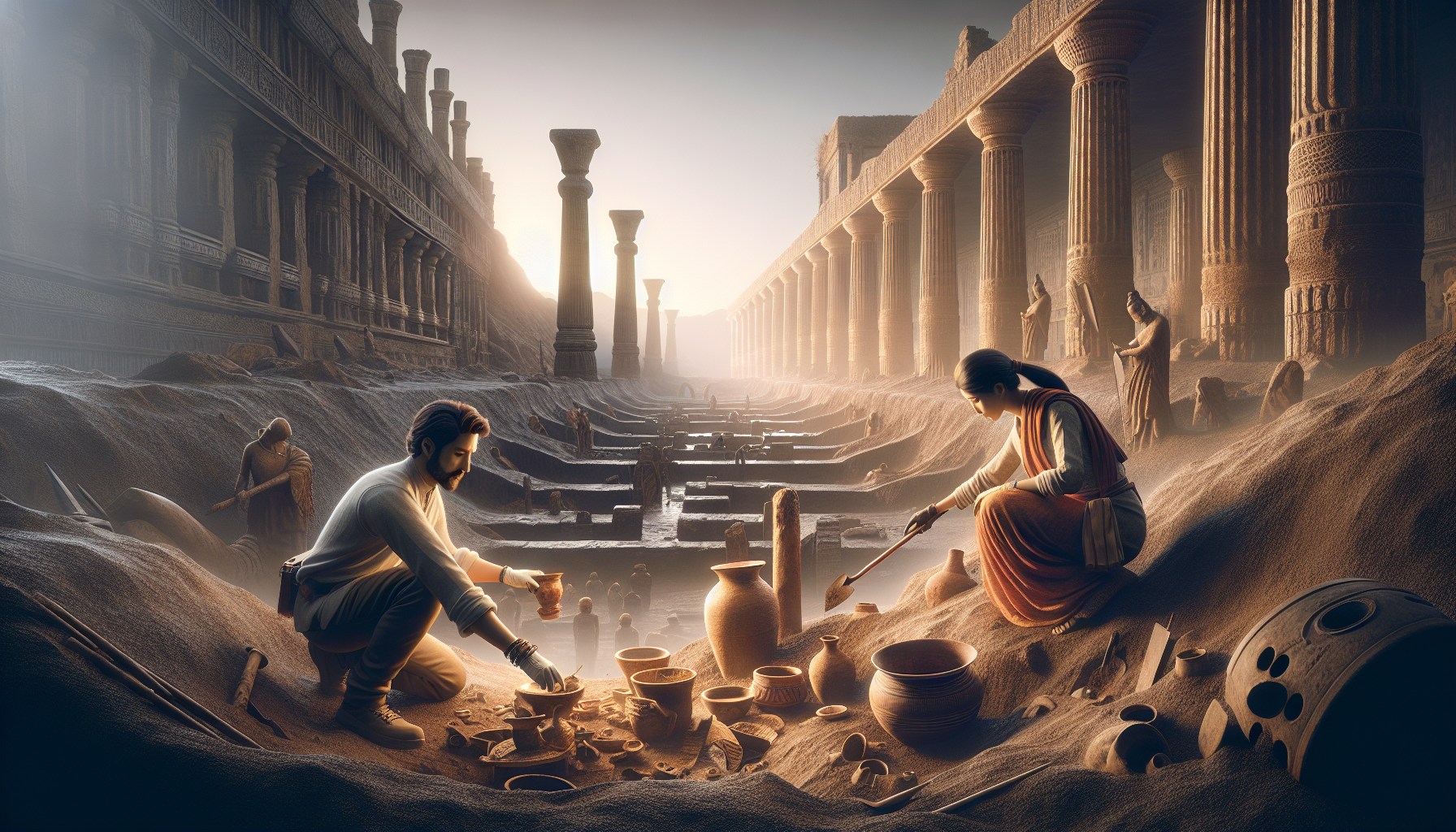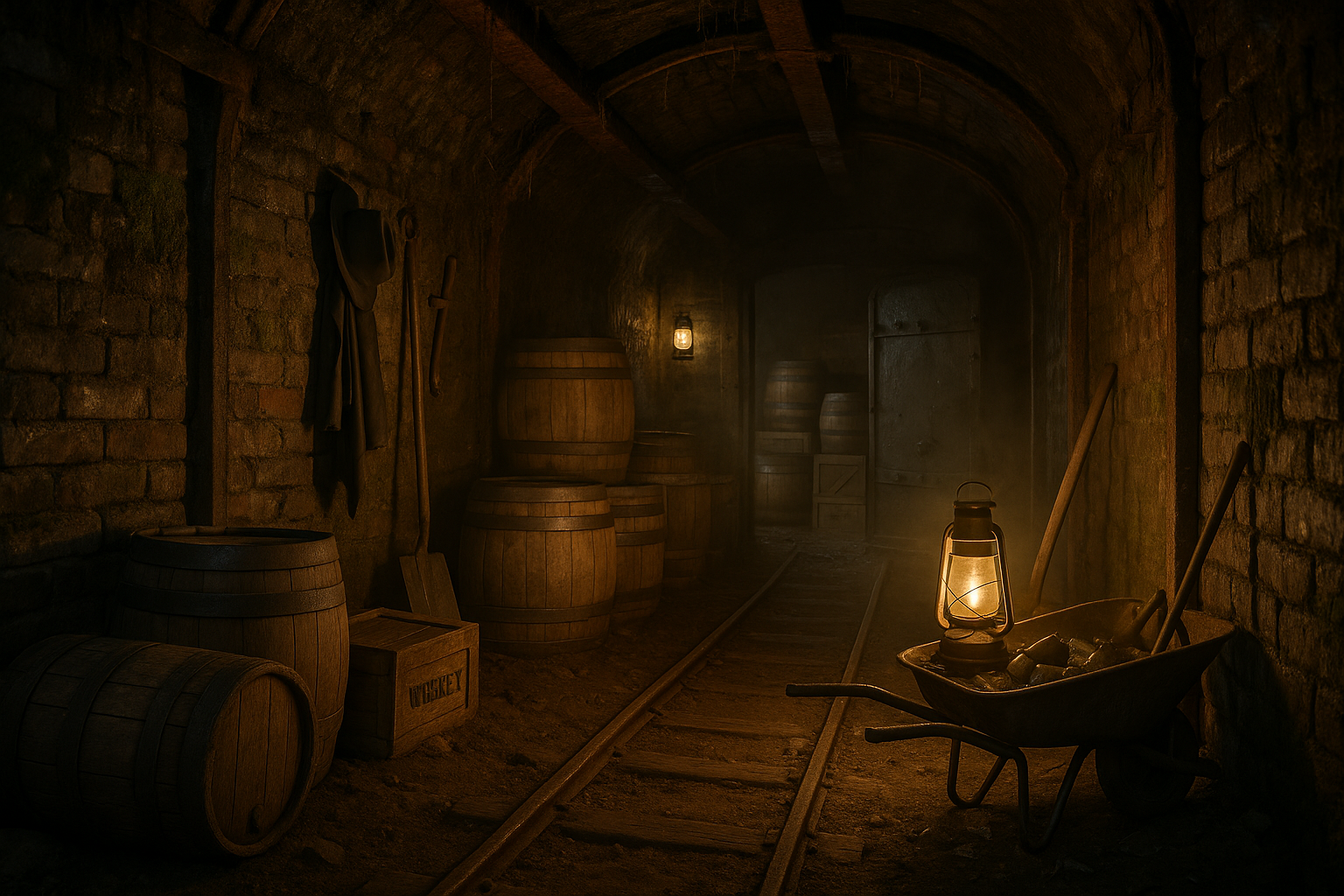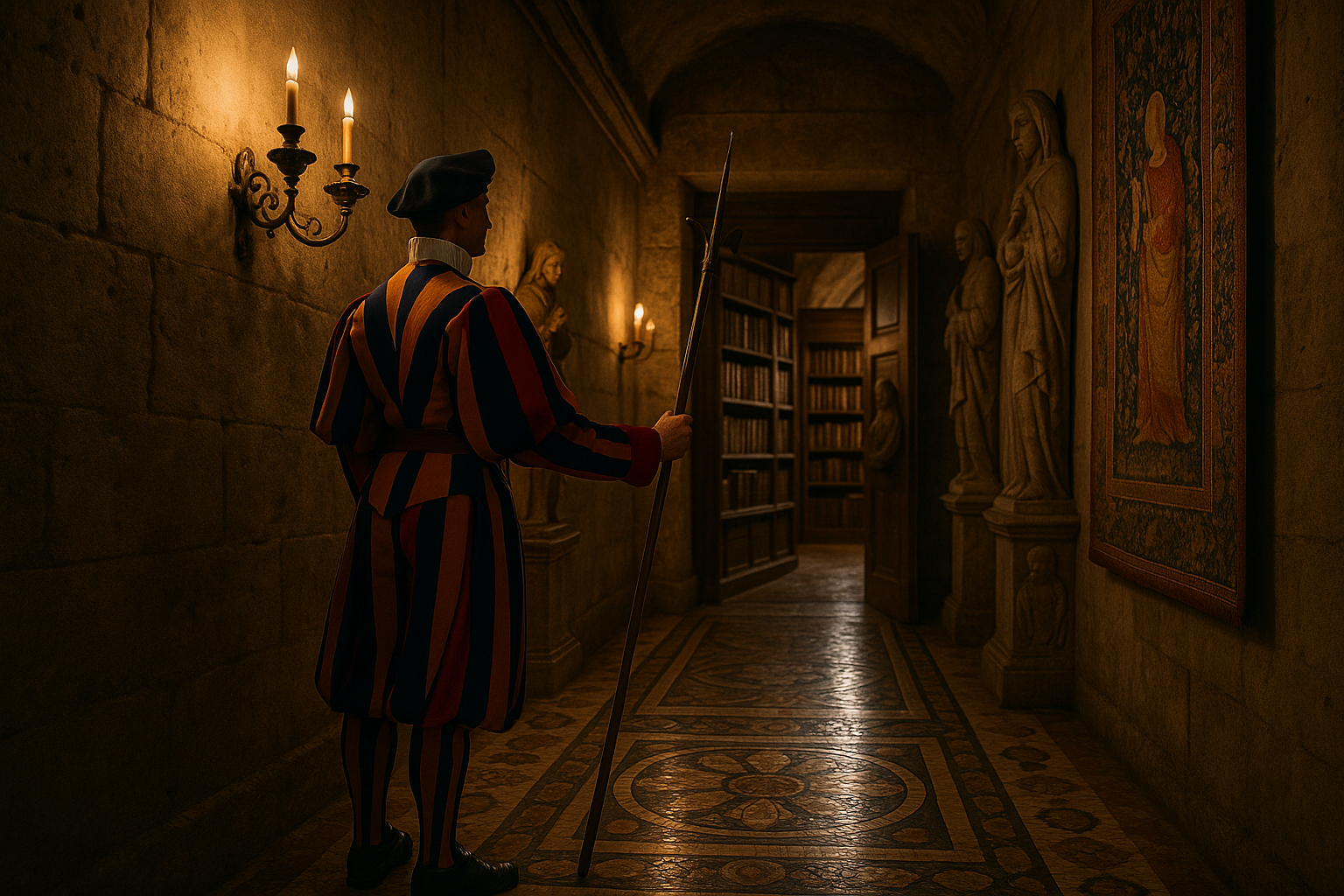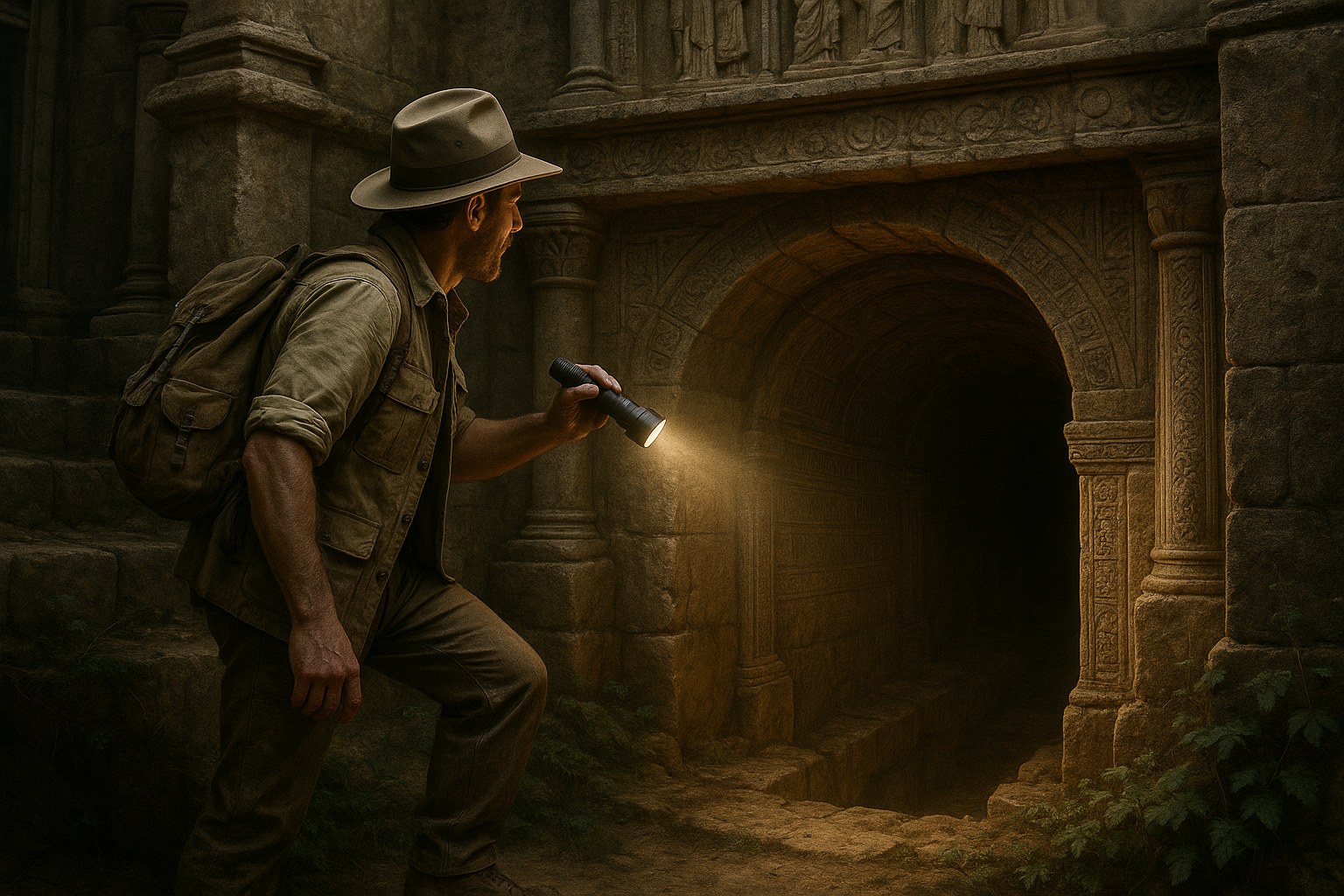In the quiet embrace of the earth lie secrets waiting to be uncovered, tales of civilizations long gone yet eternally preserved beneath layers of time. Welcome to the enthralling world of buried cities, where history meets mystery, and the past whispers its stories to those who dare to listen. Archaeology, the bridge connecting us to these ancient worlds, offers a fascinating lens through which we can explore the complexities of human civilization, technological advancement, and cultural evolution. It is a discipline that requires patience, precision, and a deep curiosity about the lives of those who walked the earth long before us. 🌍
Picture this: a city bustling with life, its streets alive with merchants, artists, and philosophers. Then, in a blink, it vanishes beneath a cloak of ash, sand, or water, hidden from the world for centuries. Such is the fate of cities like Pompeii, Herculaneum, and even the legendary Atlantis—places that once thrived with vibrant communities, only to be swallowed by natural disasters or the slow, relentless passage of time. These buried cities captivate the imagination, inviting us to ponder not only their sudden demise but also the daily lives, beliefs, and innovations of their inhabitants.
The allure of archaeology lies in its ability to peel back the layers of time and bring these forgotten cities to life. Each artifact unearthed, whether a simple pottery shard or a grand architectural structure, holds the power to reshape our understanding of history. From the meticulous excavation of Pompeii, where volcanic ash preserved intricate frescoes and everyday objects, to the underwater adventures of discovering the remnants of Dwarka in India, each discovery adds a piece to the puzzle of human history. These sites are not merely relics of the past; they are dynamic entities that continue to influence our present and future.
In this exploration of buried cities, we will delve into the techniques that archaeologists use to excavate and preserve these ancient treasures. From cutting-edge technology like ground-penetrating radar to traditional methods of excavation, we will uncover how modern science aids in revealing the secrets of the past. Additionally, we will examine the role of archaeology in understanding cultural practices, economic structures, and social hierarchies, providing a comprehensive view of how ancient societies functioned and flourished.
Join us on this captivating journey as we unearth the mysteries of buried cities. We will navigate through the sands of time, exploring the rich tapestries of civilizations like the Maya, who left behind monumental cities shrouded in jungle foliage, and the sophisticated urban landscapes of the Indus Valley Civilization. Through the lens of archaeology, we will not only glimpse into the daily lives of these ancient peoples but also uncover the lessons they offer for our contemporary world. So grab your metaphorical shovel and brush, and let’s embark on an adventure that transcends time and space, where every discovery opens a new chapter in the grand story of human civilization. 🏺✨
## The Thrill of Discovery: Unearthing the Past
Archaeology is a field that has always fascinated humankind, bridging the gap between the past and present by uncovering the stories buried beneath the earth. It offers glimpses into the lives of people who walked the earth centuries or even millennia ago, revealing their customs, technologies, and day-to-day existence. Buried cities, in particular, hold a special allure as they offer a window into complete worlds that once thrived and then vanished, leaving only traces behind.
### The Allure of Buried Cities
Unearthing buried cities is not merely about digging in the dirt; it is an intricate process that involves meticulous planning, research, and analysis. It’s a multidimensional endeavor that combines history, anthropology, technology, and art. The quest to uncover these hidden worlds can span years or even decades, as archaeologists painstakingly piece together fragments to construct a picture of past civilizations.
One of the most iconic buried cities is Pompeii, which offers a poignant snapshot of Roman life frozen in time by the catastrophic eruption of Mount Vesuvius in AD 79. Excavations began in the 18th century, and since then, Pompeii has become a symbol of archaeological discovery, providing invaluable insights into Roman architecture, social structure, and daily life. The preservation of buildings, artifacts, and even human figures covered in volcanic ash offers a unique perspective on a society abruptly halted in its tracks.
As you delve deeper into the mysteries of buried cities, watch this insightful video that sheds light on the latest discoveries and technological advances in archaeology: [The Lost City of Pompeii](https://www.youtube.com/watch?v=12345) by National Geographic. 🏺
### Advanced Techniques in Archaeological Excavations
Modern archaeology has significantly evolved from its early days, incorporating cutting-edge technology to enhance the discovery and preservation processes. Techniques such as LiDAR (Light Detection and Ranging) have revolutionized the way archaeologists locate and map buried structures. By sending laser pulses from an aircraft, LiDAR can penetrate dense vegetation and reveal the topography of the land beneath, making it possible to identify ancient cities hidden in jungles or forests.
Geophysical surveys are another critical tool in the archaeologist’s arsenal. Methods like ground-penetrating radar and magnetometry allow researchers to detect buried artifacts and structures without the need for immediate excavation. These non-invasive techniques help archaeologists plan their digs more effectively and minimize damage to the sites.
Drones have also become indispensable in modern archaeological research. Equipped with high-resolution cameras, drones can capture detailed aerial images and create 3D models of excavation sites. This technology not only aids in mapping and documentation but also in engaging the public and sharing discoveries in real-time. Consider the advantages of these advanced tools as you explore the comparative table below:
| Technology | Purpose | Advantages |
|---|---|---|
| LiDAR | Mapping buried landscapes | High precision, penetrates vegetation |
| Geophysical Surveys | Detecting underground structures | Non-invasive, accurate |
| Drones | Capturing aerial imagery | 3D modeling, real-time updates |
These advancements are not only enhancing the efficiency of archaeological projects but also ensuring the protection and preservation of our shared heritage. Feel free to explore more about these technologies and their applications by checking out the resources available online.
### Exploring Iconic Buried Cities Around the World
The world is dotted with fascinating examples of buried cities, each with its unique story and significance. From the bustling streets of ancient Rome to the isolated ruins of the Maya civilization, these sites offer a window into the past.
#### Pompeii: A Roman Time Capsule
The city of Pompeii is one of the most well-known archaeological sites, offering an unparalleled view of Roman life. Buried under volcanic ash for centuries, Pompeii’s buildings, frescoes, and artifacts have been remarkably preserved. Excavations have revealed villas adorned with intricate mosaics, bustling marketplaces, and even graffiti etched by the city’s residents.
Researchers continue to unearth new finds, shedding light on everything from culinary habits to the social hierarchies of ancient Rome. Recent discoveries include the remains of a chariot and a well-preserved thermopolium, an ancient fast-food stall complete with colorful frescoes.
#### Petra: The Rose City of the Nabataeans
Carved into the red sandstone cliffs of southern Jordan, Petra was once a thriving trade hub for the Nabataean civilization. Known for its stunning architecture and complex water management systems, Petra remained hidden from the Western world until its rediscovery in the early 19th century. Archaeologists have since explored its tombs, temples, and theaters, piecing together the story of a civilization that thrived in the harsh desert environment.
#### Machu Picchu: The Incan Citadel
Perched high in the Andes Mountains, Machu Picchu is a testament to the ingenuity of the Inca civilization. This iconic site, rediscovered by Hiram Bingham in 1911, is renowned for its sophisticated agricultural terraces, intricate stonework, and panoramic vistas. The purpose of Machu Picchu remains a subject of debate, with theories ranging from a royal estate to a religious retreat.
The discovery of these and other buried cities offers profound insights into the resilience, creativity, and adaptability of ancient cultures. As you explore these captivating sites, consider the broader implications of their discoveries on our understanding of human history.
### The Impact of Archaeological Discoveries on Modern Society
The excavation of buried cities has far-reaching implications beyond the realm of academia. These discoveries enrich our understanding of human history and cultural evolution, providing valuable lessons for contemporary society.
#### Cultural Heritage and Identity
Archaeological sites are tangible links to our collective past, contributing to a sense of cultural identity and heritage. They serve as reminders of human achievements and the diverse tapestry of civilizations that have shaped the world. Preserving these sites is essential for future generations to appreciate the richness of human history and to foster a deeper connection to their roots.
#### Tourism and Economic Impact
Buried cities often become major tourist attractions, drawing visitors from around the world and stimulating local economies. Tourism can provide funding for ongoing archaeological research and conservation efforts, creating a sustainable cycle of discovery and preservation. However, it also presents challenges, as the influx of tourists can strain resources and pose risks to the sites themselves. Balancing tourism with preservation is a critical consideration for archaeologists and policymakers alike.
#### Technological Innovation
The challenges of uncovering and preserving buried cities have spurred technological innovation across multiple fields. Advances in imaging, data analysis, and preservation techniques have applications beyond archaeology, influencing industries such as medicine, engineering, and environmental science. As technology continues to evolve, it will undoubtedly play a pivotal role in shaping the future of archaeological exploration.
As we marvel at the discoveries emerging from these buried cities, it is essential to recognize their broader significance and the responsibility we share in preserving them for future generations. Explore further by checking out related videos and articles that delve into the impact of archaeological findings on contemporary society.
Through the lens of archaeology, we can journey into the past, uncovering the secrets of buried cities and gaining a deeper appreciation for the rich tapestry of human history. Each discovery adds another piece to the puzzle, helping us understand where we came from and inspiring us to reflect on the future we wish to build. 🌍🔍

Conclusion
In conclusion, the exploration of buried cities through the lens of archaeology unveils a world rich in history, culture, and human resilience. This article has journeyed through the intriguing processes, groundbreaking discoveries, and the immense significance of archaeological endeavors in understanding ancient civilizations. We have delved into how these cities, once thriving hubs of human activity, offer profound insights into the past, shaping our understanding of human evolution, societal development, and cultural diversity.
One of the pivotal points discussed is the methodical approach of archaeology that combines rigorous scientific techniques with innovative technologies. From carbon dating to advanced imaging techniques, archaeologists are equipped with tools that allow them to peel back the layers of time with precision and care. These methodologies not only help in accurate dating of artifacts but also in reconstructing ancient environments and societal structures. The use of technology, such as satellite imagery and ground-penetrating radar, has revolutionized the way buried cities are discovered and studied, making it possible to uncover sites that were previously inaccessible or unknown.
Moreover, this article has emphasized the importance of interdisciplinary collaboration in archaeology. By integrating knowledge from fields such as anthropology, history, and geology, archaeologists can form a more comprehensive picture of the past. This holistic approach ensures that interpretations are well-rounded and grounded in multiple perspectives, thus enriching our understanding of ancient societies and their interactions with the environment and each other.
The rediscovery of buried cities also highlights the resilience and adaptability of human societies. As we explored the ruins of cities like Pompeii, Machu Picchu, and Petra, we observed how these ancient civilizations adapted to their environments, developed complex infrastructures, and fostered vibrant cultures. These stories of human ingenuity and endurance resonate through time, offering lessons that are still relevant in today’s context of rapid urbanization and environmental challenges.
Furthermore, the ethical considerations surrounding archaeological excavations have been an essential part of this discourse. The article underscored the importance of preserving cultural heritage while balancing the need for exploration and research. Respecting the descendants of ancient civilizations and collaborating with local communities ensures that archaeological practices are conducted responsibly and ethically. This respectful approach not only preserves the integrity of the sites but also enriches the cultural significance for future generations.
As we reflect on the fascinating world of buried cities, it becomes evident that archaeology is not just about uncovering the past; it is about connecting with our shared human heritage. The stories unearthed from these ancient ruins inspire us to appreciate the diverse tapestry of human existence and to ponder our place within it. The ongoing research and discoveries remind us that there is still much to learn about our ancestors, their achievements, and the lessons they can teach us about resilience, innovation, and coexistence.
The significance of these archaeological endeavors cannot be overstated. They not only fill the pages of history books but also inform contemporary society about cultural diversity and historical continuity. As guardians of history, archaeologists play a crucial role in preserving the narratives of the past, ensuring that they are accessible and comprehensible to all.
In conclusion, the exploration of buried cities is a journey into the heart of human history, one that reveals the enduring spirit and creativity of our ancestors. As we stand on the shoulders of these ancient giants, we are called to honor their legacy by preserving their stories and learning from their experiences.
I encourage you, dear reader, to delve deeper into the captivating world of archaeology. Whether by visiting a local museum, engaging with documentaries, or exploring online resources, there is a wealth of knowledge waiting to be discovered. Share what you’ve learned with friends and family, and consider the profound ways in which our shared history continues to shape our world today.
To further explore the wonders of buried cities and the field of archaeology, you can access a variety of resources online. For comprehensive insights, visit reputable sites such as the [Archaeological Institute of America](https://www.archaeological.org) or explore the [World Archaeological Congress](http://www.worldarchaeologicalcongress.org) for global perspectives on ongoing research and discoveries.
Thank you for joining us on this journey through time. May the stories of ancient civilizations continue to inspire curiosity and wonder in your heart. As we unravel the mysteries of the past, let us also build a future that honors and learns from the rich tapestry of human history. 🌍🔍
If you found this article insightful, consider sharing it with others who might be interested in the fascinating world of archaeology. Your engagement helps keep the spirit of exploration alive, fostering a community of lifelong learners dedicated to uncovering the mysteries of our shared past.
Toni Santos is a visual storyteller and artisan whose work explores the quiet power of what lies beneath. With a deep fascination for subterranean and hidden architecture, Toni uncovers the layers, voids, and forgotten spaces that shape our built environment from the shadows.
His art is a journey through the unseen — from ancient underground chambers to sealed passageways, service tunnels, and foundations buried in time. Each creation tells a story of silence, secrecy, and structure — revealing how absence and concealment can be just as meaningful as what’s visible above ground.
Whether working through visual compositions, architectural studies, or symbolic handcrafted pieces, Toni captures the soul of hidden spaces. His work bridges art and archaeology, blending design with discovery. Trained in visual design and traditional techniques, Toni creates with intention. His pieces don’t just depict — they interpret, inviting viewers to rethink what space, memory, and architecture mean when they’re hidden from view.
As the creative force behind Vizevex, Toni shares this perspective through curated visual narratives, symbolic collections, and interpretive essays that give voice to the quiet geometries beneath our feet.
His work is a tribute to:
The mystery of spaces built to be forgotten
The symbolism embedded in foundations, voids, and passageways
The timeless connection between human intention and hidden structure
Whether you’re an artist, an urban explorer, or someone fascinated by the unseen frameworks that support our world, Toni invites you into a realm where architecture becomes myth — one corridor, one layer, one buried story at a time.





